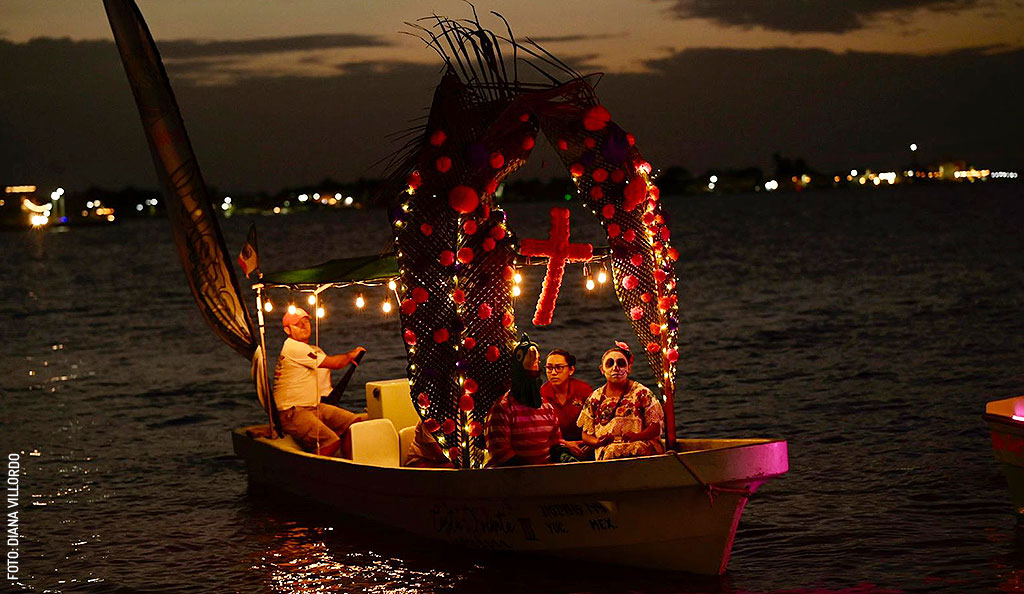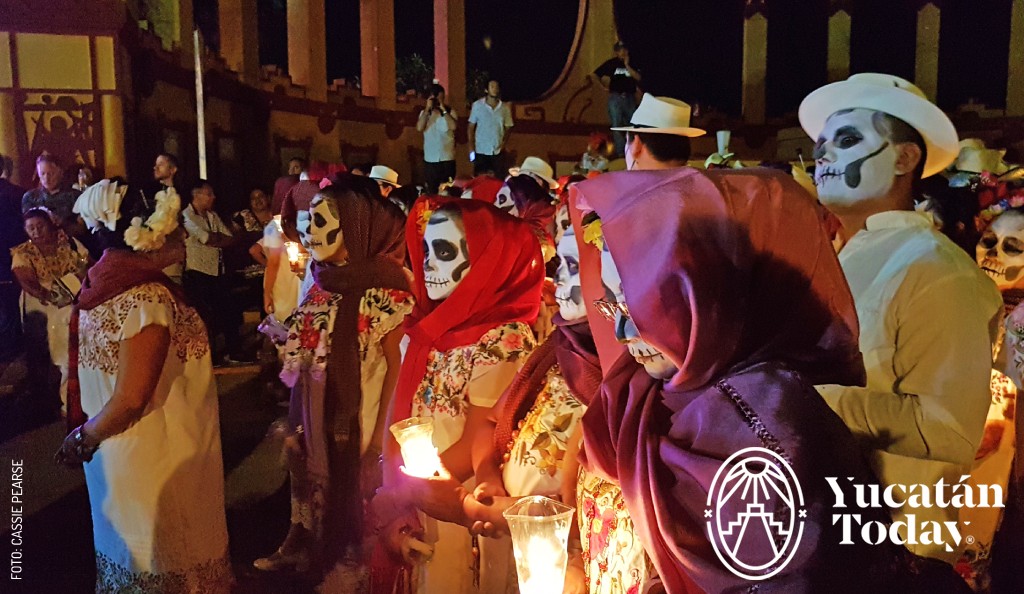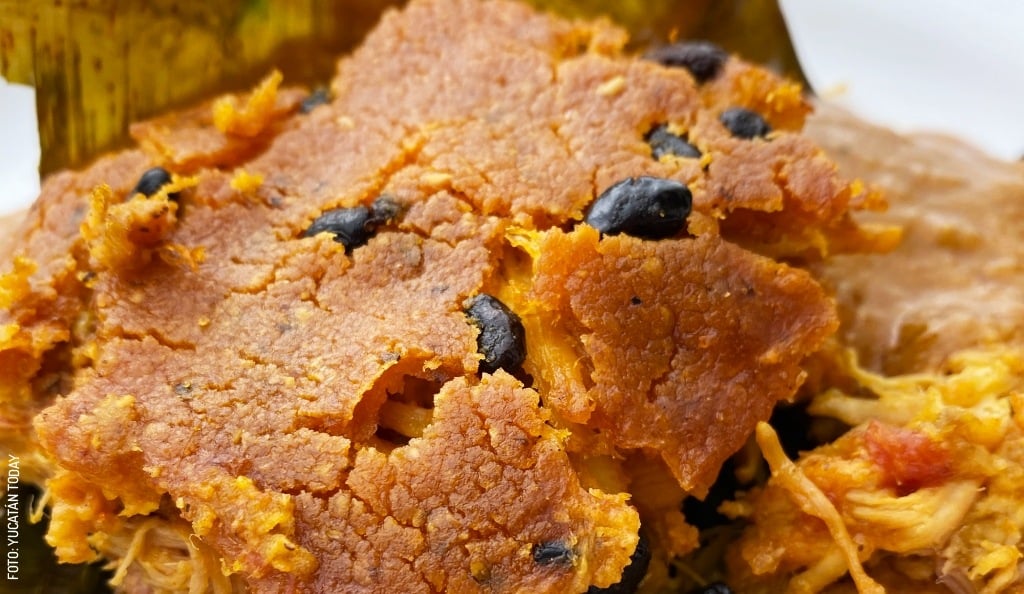Janal Pixan, Finados, or Day of the Dead in Yucatán
The second half of October has become one of the most popular times to visit Yucatán. The heat has eased, along with the hurricane season, and the beauty of the state is highlighted in countless ways, including those surrounding the celebration of what is known in the rest of México (and much of the world) as the Day of the Dead.
In Yucatán, the Mexican celebration of the Day of the Dead is called “Días de Finados (days of the deceased)” or simply “Finados.” In Mérida and more touristy towns, it is more commonly referred to as Janal Pixan, which means “food of the souls.” Keep reading to learn more about this distinction.
The Days of Finados

The Days of Finados are a loving reunion between the living and those who have physically passed away, whose souls remain and come to visit us; rather than days of celebration, they are days of respect. During the Days of Finados, we remember those who are no longer with us: the finado (late) Don Elut, the finada Pelipa (Editor’s note: in Maya, the sound of the letter F is unusual, and many people pronounce it as P). A finado is someone whose journey in earthly life has ended.
As with other Day of the Dead celebrations, the days devoted to “Finados” that are most emotionally charged begin at the end of October. October 31 is dedicated to the souls of children, November 1 to the souls of adults, and November 2 to all saints. In Yucatán, these souls are believed to stay among the living throughout November; in some communities, it’s still a cherished tradition to gather for prayers and prepare special meals on the last day of the month, a tradition known as mes biix. This comes from the Spanish word for month (mes) and the Maya word biix, which in Spanish is called ochovario or ochavario, and refers to the eight days following a death.
As you can see, the Days of Finados contain a great deal of religious syncretism. While on October 31 and November 1, food, incense, and flowers are offered at home for the souls of visiting relatives, on November 2, the church dedicates prayers to all saints through masses and visits to the cemetery.
Janal Pixan
According to collected data, it was in 1995 that the term Janal Pixan was officially adopted for the days of finados in the communities.
It is worth noting that, according to the writing standard for the Maya language, published by the National Institute of Indigenous Languages (INALI) in 2014, Janal Pixan should be spelled with a "J," even though this is debated each year and some people continue to spell it with an "H" (Hanal Pixan). Translated into English, Janal Pixan means "food for the souls," since the Maya word janal means food and pixan means spirit or soul, as the idea is that the spirits of the deceased are the ones who come to this feast.
The pixan is the gift from the gods to humans at birth, a fluid that indicates a person's energy and intensity, their strength, and what will accompany them to the underworld. It is said that the worlds of the living, the dead, and the gods are connected by paths in the shape of serpents, along which souls travel.

It was from 1995 onwards that altar displays began in Mérida's Plaza Grande as part of the celebrations. Gradually, schools, universities, restaurants, and hotels in Mérida and across the state also began to hold their own displays, turning them into competitions where judges, some more knowledgeable about tradition than others, are invited each year. These contests are often distorted, as they tend to include elements that do not align with local cultural practices in order to create "flashier" but less authentic altars.
Over time, these celebrations have grown both in number and popularity. Many municipalities now organize festivals with related activities, such as Mérida's Festival de las Ánimas (Festival of the Souls); these activities include processions, tours, culinary displays, and photo exhibitions. The most popular event, without a doubt, is Paseo de las Ánimas (the Stroll of the Souls), which began in Mérida in 2008. It consists of a procession made up of hundreds of people, dressed in traditional Yucatecan attire with their faces painted like skulls, starting at the general cemetery and walking north, passing through Barrio La Ermita, and ending at San Juan Park.
Since the creation of Paseo de las Ánimas in Mérida, similar activities have sprung up in other parts of the state, along with versions involving bicycles, pets, and other variations. Each year, Yucatán Today compiles a list of various events, organized by location and date, so you don’t miss out on the ones that interest you the most. Click here for the latest calendar of Janal Pixan (Day of the Dead) events in Yucatán.
Overall, the events taking place during these days are often grouped with those held in the rest of the country, collectively referred to as “Día de Muertos” or “Day of the Dead.” Schools reinforce this connection, as children learn about the Day of the Dead while setting up altars (whether at home, school, or both) and even attend classes wearing traditional Yucatecan clothing, in line with the celebration of Finados or Janal Pixan.
What exactly is a Catrín/Catrina?

In recent years, there has been some confusion between the terms "catrín/catrina" and "calavera" (skull). This confusion stems from one of the best known artworks featuring a skull, José Guadalupe Posada's “La Calavera Garbancera”, which was later named “La Catrina” when Diego Rivera depicted it in one of his most famous murals, Sueño de una tarde dominical en la Alameda Central” (Dream of a Sunday Afternoon in the Alameda Central).
La Calavera Garbancera was a social critique of Mexicans (especially those of indigenous origin) who rejected their roots and sought to appear as if they came from a wealthier social class, showing how death would ultimately claim everyone equally. The term "catrín" (and "catrina"), on the other hand, was used to refer to people dressed very elegantly, as well as indigenous people who, abandoning their traditional clothing, adopted European fashion.
Thus, Diego Rivera’s Catrina referred to a very "dolled-up" or fancy skull, wearing an elegant ostrich feather hat. The image became so iconic that, to this day, the words "catrín" or "catrina" are more associated with the skull than with the elegant attire.
As part of the Noche Mexicana (Mexican Night) organized every Saturday by the Mérida City Hall, Festival de las Ánimas usually includes a parade of catrinas. This is different from Paseo de las Ánimas, organized by various city councils, which represents the souls leaving the cemetery and returning to their homes.
Preparation for the Days of Finados

Now let’s return to the tradition of the Days of Finados, which is celebrated more privately and intimately within Yucatecan homes. The Days of Finados involve a series of preparations in anticipation of welcoming the souls. In some families, preparations begin at the start of October. During these days, even the air smells different; there is a feeling of sadness and nostalgia. In the countryside, you’ll notice colorful wildflowers blooming, which sometimes find their way onto the altars. These traditions, passed down through generations, are embraced with deep devotion, with little question to whether they are real or not. Families take special care in cleaning their homes and yards, knowing that a tidy space will bring comfort to the visiting souls, sparing them from any sadness or the need to tidy up themselves.
In some communities, albarradas (stone walls) are still painted white, and candles are placed to light the way for the souls that visit their relatives on Earth each year. The souls are remembered as they were in life; people recall the foods they liked and talk to them about what has happened in the year. It is a celebration of togetherness, a family gathering to prepare the food that the deceased loved, cooked in the píib (underground oven).
The next step is to prepare the altar-table, where the offerings will be placed.
Altars for Finados or Janal Pixan in Yucatán
The preparation of the Finados altar in Yucatán is a tradition that blends both Maya and Spanish elements. Some modern variations reference the Maya worldview by setting up the altar on three levels. However, traditionally, the altar consists of a simple table that may be covered with a white or embroidered tablecloth. In some communities, instead of a tablecloth, the altar is covered with banana or palm leaves. Religious images are often placed on the altar. Possibly the most common religious symbol used is the green cross, a wooden cross painted green that is said to also allude to the ceiba tree (a symbol of the Maya universe); this is because green crosses are easily found in Maya homes, passed down since generations ago.
Nowadays, the Days of Finados in Yucatán are celebrated in a variety of ways. Even within the same municipality, the forms of celebration may vary, each with its own unique touches. It’s important to note that there is no single rule about what to place on the altars; much depends on the feelings and beliefs of each family. According to testimonies from local communities, even a glass of water and a piece of bread on the altar table can be sufficient if offered with true intent.
However, the most commonly found elements on an altar table include photographs of the deceased, candles, copal or incense, and wildflowers. Among these flowers, xté, xpujuk, and jmul stand out, as well as virginias, cape periwinkle, and coral vine flowers. And, of course, the one essential element is the food that the departed enjoyed in life.
You can read more about the altars, their staple items, and where to find them in our article “Janal Pixan or Day of the Dead Altars in Yucatán.”
The food of Janal Pixan, Finados, or Día de Muertos in Yucatán
Food plays a central role in honoring the deceased; after all, Janal Pixan means “food of the souls.” It is believed that during the Days of Finados, the souls of the departed return to Earth to once again enjoy their favorite dishes, which are specially prepared for them and placed on the altar table.

The dishes offered on the altar vary according to the tastes of the deceased. During the days dedicated to them, prayers are said before each meal, and the dishes are changed according to the time of day (breakfast, lunch, and dinner). The meals are often accompanied by other delicacies such as xe’ek’ (a jicama and citrus salad), pibinal (corn cooked in the píib), and calabaza melada (candied pumpkin). Beverages like fresh atole and hot chocolate are also offered, along with traditional sweets and bread. After the food has been offered to the deceased so that they may enjoy it, it is shared with family and friends.
What all Yucatecan altars have in common is the star dish of the season: mukbilpollo (or pib), a tamal made with chicken and/or pork, wrapped in banana leaves, and cooked in an underground oven called a píib.
The mukbilpollo or pib is prepared, offered, and served on the last day of prayers, when it is believed that the souls return to the underworld. In some Yucatecan communities, it is eaten on November 2; in others, it is eaten during the biix or ochovario (eight days after November 2); and in still others, it is eaten during the biix-mes, the last day of November. This is because it is believed that the pib is the only dish that the deceased can take back with them to the underworld.
The tradition of sharing mukbilpollo while remembering those who are no longer physically present is deeply rooted and eagerly anticipated by Yucatecos across all social groups.

Read more about mukbilpollos in our article All about Pib. If you want to try mukbilpollo or pib, participate in a workshop to learn how to prepare it, or make it at home, we have several articles to help you get started.
Finados, Janal Pixan, Día de Muertos, and now also Halloween

There is yet another cultural influence that has gradually taken hold in Yucatán over time. With the arrival of people from other regions, advances in technology, and the influence of media, more and more references to Halloween can be observed—an event more associated with ghosts and monsters that involves costume parties. It is becoming increasingly common for children to dress up and go trick-or-treating, a tradition that had never existed in Yucatán before.
By Ely Chavarrea and the Yucatán Today team.

The Camino de Ánimas Festival in Río Lagartos

The Real Stroll or Parade of the Souls




.jpg)



